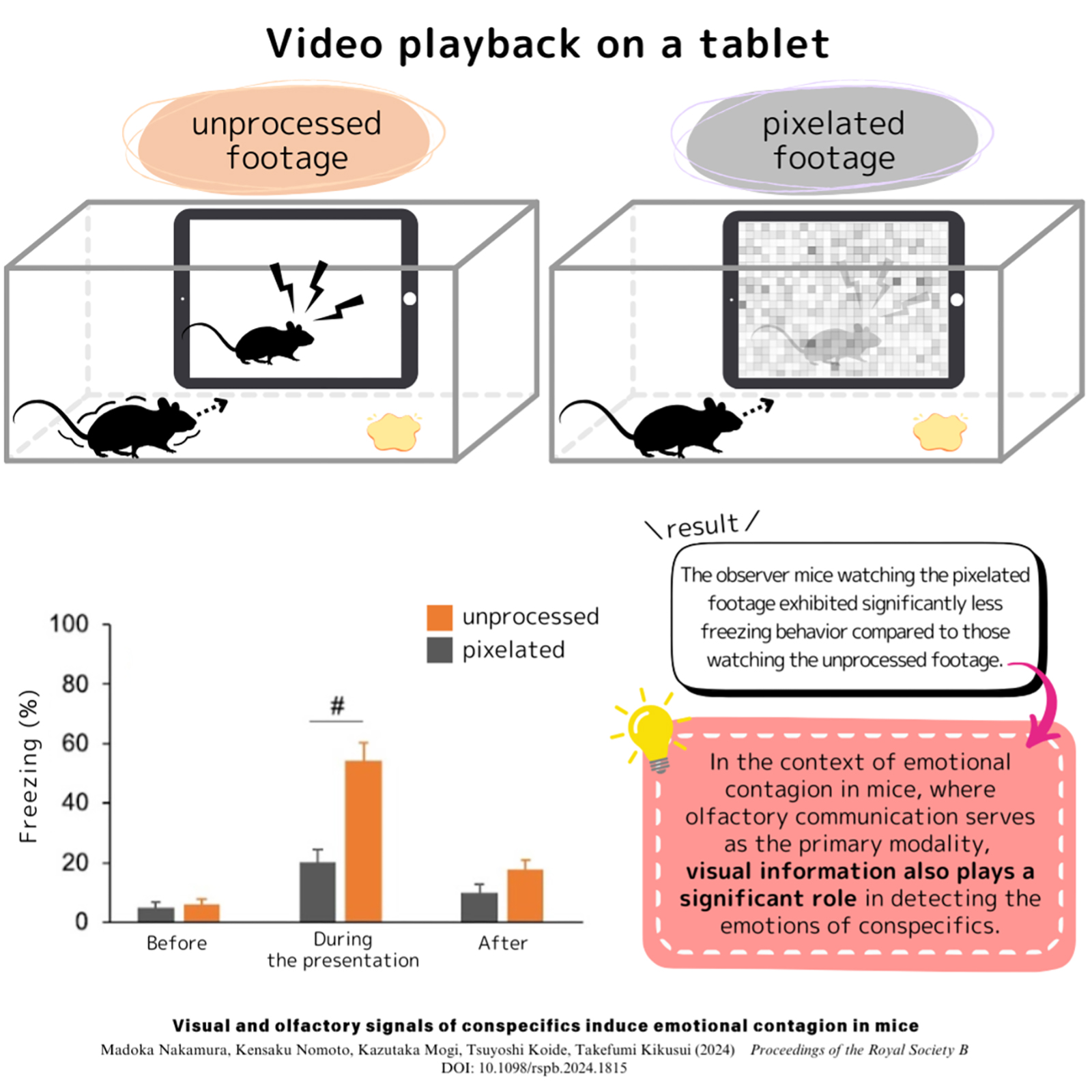In addition to “smell,” “sight” is important for emotional contagion in mice
Koide Group / Mouse Genomics Resource Laboratory
Visual and olfactory signals of conspecifics induce emotional contagion in mice
Madoka Nakamura, Kensaku Nomoto, Kazutaka Mogi, Tsuyoshi Koide*, Takefumi Kikusui*
* Co-corresponding authors
Proceedings of the Royal Society B (2024) 291: 20241815. DOI:10.1098/rspb.2024.1815
Madoka Nakamura, a master’s student at the Graduate School of Veterinary Medicine, Azabu University (currently a doctoral student at Tokyo University of Agriculture and Technology/National Center of Neurology and Psychiatry), Professor Takefumi Kikusui at the Laboratory of Human-Animal Interaction and Reciprocity, Azabu University, and Associate Professor Tsuyoshi Koide at the Mouse Genomics Resource Laboratory, National Institute of Genetics, and colleagues have used a wild Japanese mouse strain (MSM/Ms) and revealed that not only olfactory but also visual information is essential for the function of “emotional contagion,” which is the detection of emotions in others.
Emotional contagion is the transmission of one individual’s emotions to another. This is considered to be the most core phenomenon of empathy, and has been observed not only in humans but also in many other animal species, including mice and dogs.
Mice are believed to communicate primarily through their sense of smell and use smell to exchange information, but it was not clear what cues they use to catch the emotional information of others in emotional contagion.
In this study, we used a tablet (iPad) to present a two-dimensional image to mice, which showed an unknown mouse in pain after receiving an electric shock. In addition to the 2-D video, when the mice were shown the urine of a shocked individual in another room, they exhibited significantly higher freezing behavior (a type of fear response in mice), even though they themselves were not shocked.
Furthermore, when mosaic processing was applied to the images, the occurrence of the freezing behavior was significantly weaker than when the mice were exposed to normal images without mosaic processing. This indicates that visual information as well as olfactory information is important for emotional contagion in mice. On the other hand, the importance of auditory information was not significantly affected by the absence of sound from the tablet, as the results did not differ from those obtained under the condition of sound.
This work was supported by the JSPS Grant-in-Aid for Scientific Research (no. 25118007) from the Japan Society for the Promotion of Science and JSPS, and by the Institute of Genetics, Publicly Invited Collaborative Research/NIG-JOINT (84A2014, 33A2015, 35A2016).
The results of this research were published in the online edition of the international scientific journal Proceedings of the Royal Society B on December 11, 2024.
















